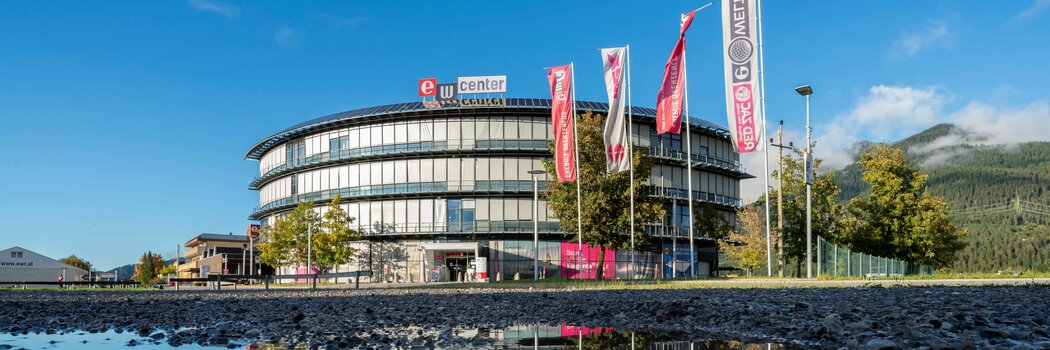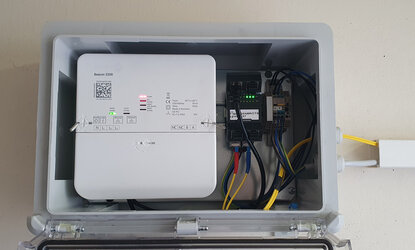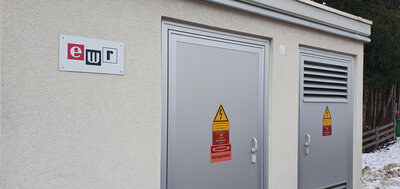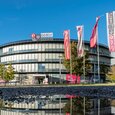
Smart network solution for smart metering

Energy and IT converge
Elektrizitätswerke Reutte can look back on more than 120 years of history; the Plansee hydroelectric power plant was officially connected to the grid back in 1902. Today, hydroelectric power production is still the core business. The group of companies operates 13 hydroelectric power plants, but a lot has changed: the days of "switchmen" who operated levers manually are long gone. Today, the plants are remotely controlled. The fundamental precondition for this is a secure and reliable network infrastructure, which the company started to set up more than 20 years ago. The EWR power plants, transformer stations and substations were systematically connected with a dedicated fiber network in order to exchange data securely and reliably. By the end of 2022, at least 40 % of all metering points have to be equipped with a smart meter, and 95 % by the end of 2024, according to a decree of the Austrian Ministry of Economics.
Critical infrastructure with high demands
Energy providers are part of the critical infrastructure, all data must be transmitted securely and reliably. For the experts at EWR, this is the key reason for setting up and operating a secure fiber network under their own management. The company is successfully using network technology from MICROSENS GmbH & Co. KG. Gerold Vogler, Secondary Technology Department and Smart Meter Project Manager explains: "Both the WDM systems and the Profi Line Industrial Switches, which we have been using for years, work absolutely reliably and are easy to handle. Expanding our network with new components from MICROSENS seemed to be ideal for us." However, the switches had to meet the specific requirements of the energy provider:
- Compact dimensions
- Wide temperature range
- Direct 230V power supply
- Implementation of ring topology possible

Robust technology for any environment
The MS440217MXH-G6+ Ruggedized Micro Switch from MICROSENS convinced in every respect. The very compact 6-port switch can be operated at temperatures between -25 °C and +65 °C. This temperatures can be reached in the transformer stations which are not air-conditioned. The direct 230 V connection eliminates the need for an additional power supply. This is in contrast to similar products with a 24 V connection. The two fiber ports enable a ring structure to be easily set up, which increases the fail-safety of the infrastructure. From EWR's point of view, another advantage of the Ruggedized Switches are the SD cards, which store the configuration of the switches and can be quickly exchanged in the event of a failure. At the intersections of several rings, Elektrizitätswerke Reutte additionally uses 13-port Gigabit Ethernet Industrial Profi Line Modular Switches (MS652119PM-V2). A special feature here is the simplex fiber infrastructure based on single mode optical fibers. For this purpose, the MICROSENS switches are equipped with SFP transceivers, which enable bi-directional data traffic on one fiber and minimize the number of cables required. Gerold Vogler explains: "When selecting products, we first look at the reliability, performance and security of the technology. But of course we also consider economic aspects. The simplex infrastructure became attractive for us due to the cost-effective combination of MICROSENS switches and transceivers."
Meeting future requirements
The EWR team uses the MICROSENS Network Management Platform (NMP) to manage the MICROSENS devices. The central network management system monitors all MICROSENS components, displays the rings clearly so that any interruptions can be recognized at a glance, and enables updates to be imported from a central point. Overall, the team appreciates the reliable technology as well as the future viability of the solution, as Gerold Vogler explains: "As an energy provider, we plan for the long term. We must be able to rely one hundred percent on the technology, today and also in the future. With MICROSENS we know that we have a competent and reliable manufacturer at our side who processes our enquiries quickly and delivers future-oriented, reliable products."
The EWR network as a whole is therefore also fit for smart metering: the expansion of the fiber network started in autumn 2021, and by the end of 2022 around 12,000 metering points in Tyrol will be connected to the network via powerline data communication. Independently of this, the other 6,000 metering points in Tyrol will be connected via the mobile network. In this way, EWR will achieve the required connection of the metering points via smart meters as scheduled. Future applications such as time-of-day pricing and billing of electricity could thus soon become reality.
About MICROSENS
Transmitting information via fiber optic connections offers numerous benefits. MICROSENS GmbH & Co. KG recognised this very early on. As one of the pioneers, the company has developed and produced high-performance communications and transmission systems in Germany since 1993. Individually matched to the demands of diverse usage areas and embedded in comprehensive concepts for individual sectors. But, above all, close to the customer. Technical challenges from customer projects are incorporated directly into product development. This way, IP-based automation solutions are created for modern buildings, cost-efficient network concepts for the office and workspace, robust and fail-safe solutions for industrial environments, optical transport systems future-oriented wide area networks and efficient coupling of sites and computer centres.











